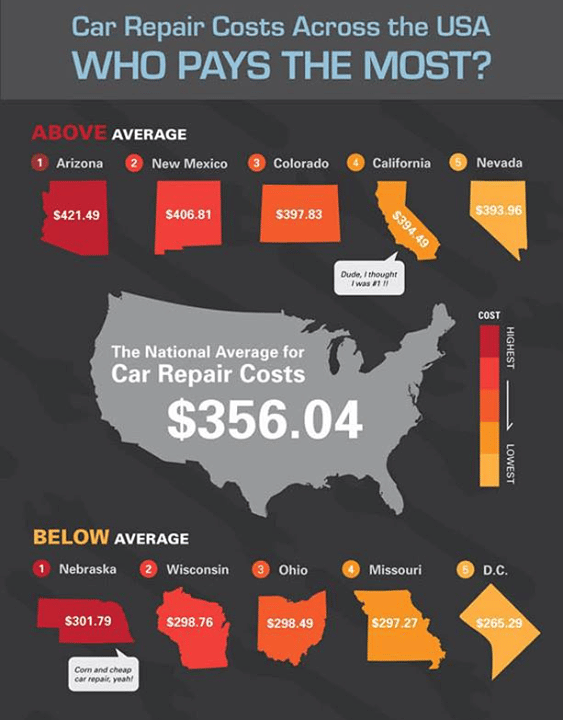Wondering About The Significance Behind Those Dashboard Caution Lights? Gain Understandings Right Into Their Implications For Your Automobile'S Safety And Upkeep
Wondering About The Significance Behind Those Dashboard Caution Lights? Gain Understandings Right Into Their Implications For Your Automobile'S Safety And Upkeep
Blog Article
Article Writer-Lauritsen Dalgaard
When you're behind the wheel, those glowing warning lights on your control panel can be a bit bewildering. Do car engine wash understand what they're trying to inform you regarding your auto's health? Recognizing the value of these lights is important for your safety and security and the longevity of your car. So, the next time one of those lights pops up, would not you wish to analyze its message properly and take the required actions to resolve it?
Common Warning Lights and Interpretations
Determine usual warning lights in your car and recognize their definitions to make certain risk-free driving.
One of the most typical caution lights consist of the check engine light, which signals concerns with the engine or emissions system. If this light comes on, it's critical to have your lorry checked immediately.
The oil pressure alerting light suggests reduced oil stress, requiring prompt interest to stop engine damages.
A flashing battery light might suggest a defective billing system, potentially leaving you stranded otherwise resolved.
The tire stress surveillance system (TPMS) light notifies you to low tire stress, affecting vehicle security and fuel performance. Overlooking this could cause hazardous driving conditions.
The abdominal light shows a problem with the anti-lock braking system, compromising your ability to stop rapidly in emergency situations.
Lastly, the coolant temperature level advising light warns of engine overheating, which can cause extreme damages if not fixed promptly.
Recognizing these usual caution lights will help you resolve problems quickly and maintain safe driving problems.
Relevance of Prompt Focus
Comprehending the typical caution lights in your vehicle is only the first step; the relevance of quickly resolving these warnings can not be stressed enough to guarantee your safety and security on the road.
When https://angelotnjdv.aboutyoublog.com/31857290/intrigued-in-understanding-the-caution-lights-on-your-auto-s-dashboard-discover-their-significance-for-your-car-s-safety-and-security-and-total-problem illuminates on your control panel, it's your cars and truck's way of interacting a prospective concern that requires interest. Ignoring these warnings can cause more extreme problems in the future, jeopardizing your security and potentially costing you extra in repairs.
Prompt interest to warning lights can prevent break downs and crashes. For instance, a flashing check engine light might suggest a misfire that, if left neglected, can cause damages to the catalytic converter. Resolving https://www.nbcboston.com/news/local/massachusetts-car-repair-cost-protest/2723925/ without delay can conserve you from a pricey fixing.
Likewise, a brake system alerting light could signal reduced brake liquid or used brake pads, critical parts for your safety and security when driving.
Do It Yourself Troubleshooting Tips
If you discover a caution light on your control panel, there are a few DIY troubleshooting ideas you can attempt prior to seeking specialist aid.
The initial step is to consult your car's manual to understand what the certain caution light suggests. In some cases the issue can be as straightforward as a loosened gas cap activating the check engine light. Tightening the gas cap may deal with the issue.
An additional common problem is a low battery, which can trigger various warning lights. Examining the battery connections for deterioration and ensuring they're protected could take care of the trouble.
If a caution light continues, you can attempt resetting it by disconnecting the cars and truck's battery for a few minutes and afterwards reconnecting it. Additionally, inspecting your vehicle's fluid levels, such as oil, coolant, and brake liquid, can assist repair warning lights associated with these systems.
Conclusion
In conclusion, comprehending your automobile's warning lights is vital for maintaining your automobile running efficiently and safely. By immediately addressing these informs and recognizing what they suggest, you can avoid expensive repairs and potential break downs.
Remember to consult your automobile's guidebook for particular information on each alerting light and act accordingly to make certain a hassle-free driving experience.
Stay informed, stay risk-free on the road!
